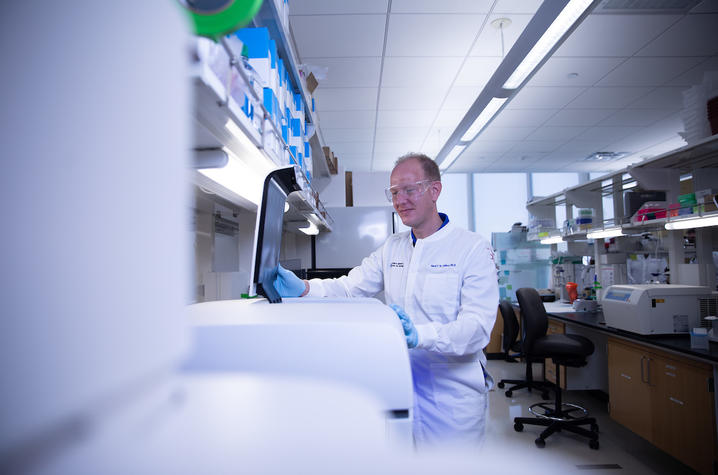
Researchers at the University of Kentucky Sanders-Brown Center on Aging are working to develop a pre-symptomatic disease diagnostic tool for Alzheimer’s disease.
“While the need for better treatments is clear, such treatments will not be very meaningful if they are administered after symptoms have onset. By then, Alzheimer’s disease has been ravaging the brain for decades to the point the brain can no longer compensate for the extreme cellular death,” said Mark T. W. Ebbert, Sanders-Brown faculty and an associate professor in the Department of Internal Medicine in the College of Medicine with a joint appointment in the Department of Neuroscience.
Ebbert is leading the research team behind the study titled “Mapping medically relevant RNA isoform diversity in the aged human frontal cortex with deep long-read RNA-seq.” The study was recently published in Nature Biotechnology.
Ebbert is also the principal investigator on multiple awards totaling nearly $5 million from the National Institutes of Health along with grants from the Alzheimer’s Association, the BrightFocus Foundation and PhRMA Foundation that funded that project.
Ebbert’s team includes lead authors Bernardo Aguzzoli Heberle, a Ph.D. candidate at Sanders-Brown, and Jason A. Brandon, a scientist at Sanders-Brown and the Department of Internal Medicine.
The team is using a cutting-edge technique known as long-read sequencing. These technologies allow for a new level of analysis of DNA and RNA, which is the molecule that helps translate genetic code from DNA into proteins.
“As a proof of principle, we sequenced aged frontal cortex brain tissue — both healthy brains and brains with Alzheimer’s disease. Our team identified 99 RNA isoforms that were either increased or decreased in Alzheimer’s brains, even when the overall gene activity didn’t change,” said Ebbert. “This shows the importance of understanding isoforms and their unique functions in a gene along with their roles in human health and disease. In fact, we found more than 1,900 genes expressing multiple RNA isoforms related to human disease.”
The team at Sanders-Brown found some of those genes are medically relevant in brain-related diseases, including Alzheimer’s disease, Parkinson’s disease, autism spectrum disorder and substance use disorder.
The team also discovered five new, complex RNA variants from mitochondrial DNA. Researchers believe this is the first study to identify this genetic material in human tissue.
Sanders-Brown scientists hope these findings can lead to new and more precise targets for disease treatment and diagnosis across a broad range of complex human diseases.
“With this method, we’ve shown there’s potential to specifically target isoforms that are either promoting cellular health or dysfunction rather than treating a gene as a single entity,” said Ebbert. “The analysis can also help us reveal unique signatures in Alzheimer’s disease not detectable at the gene level.”






















